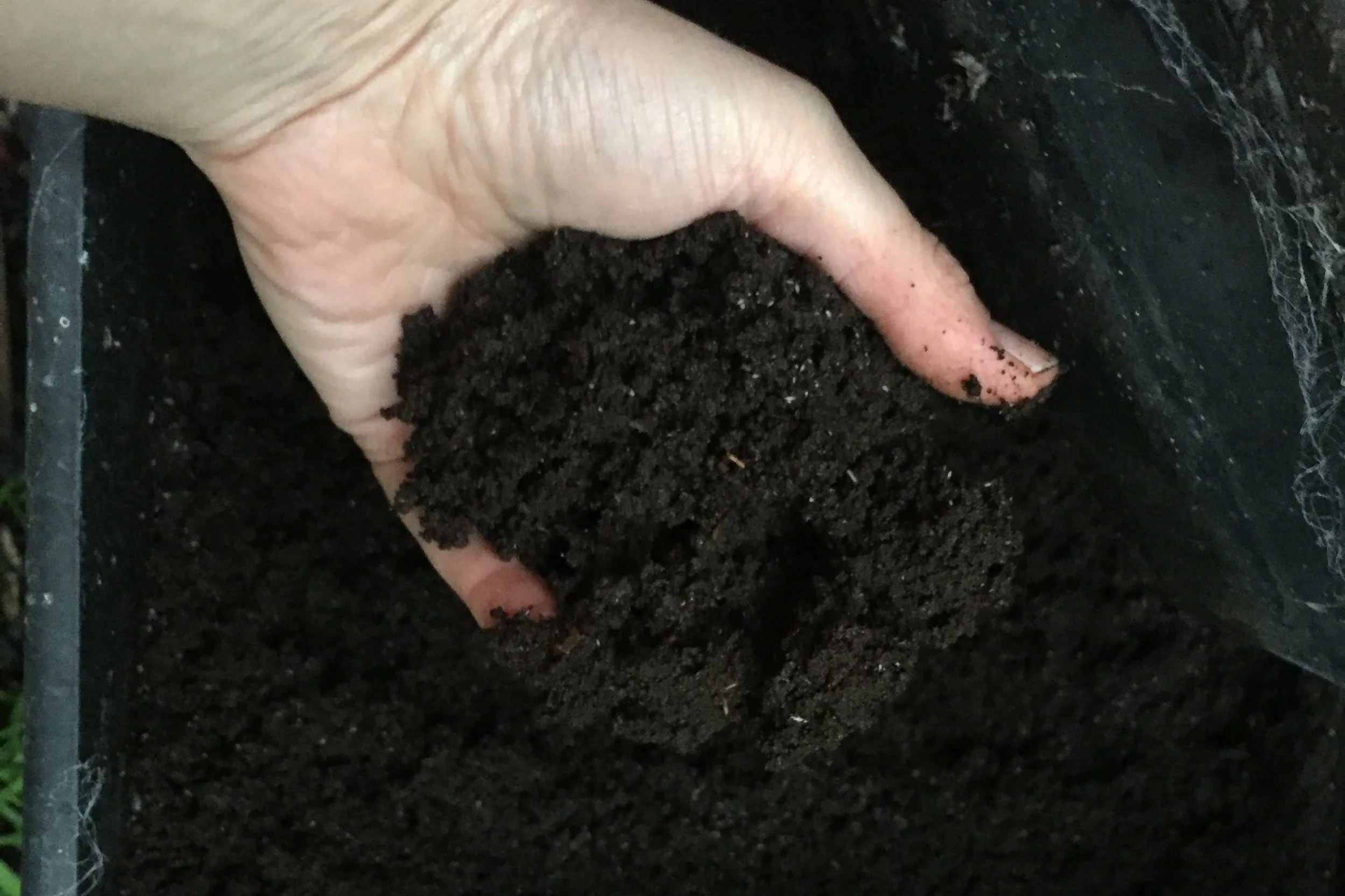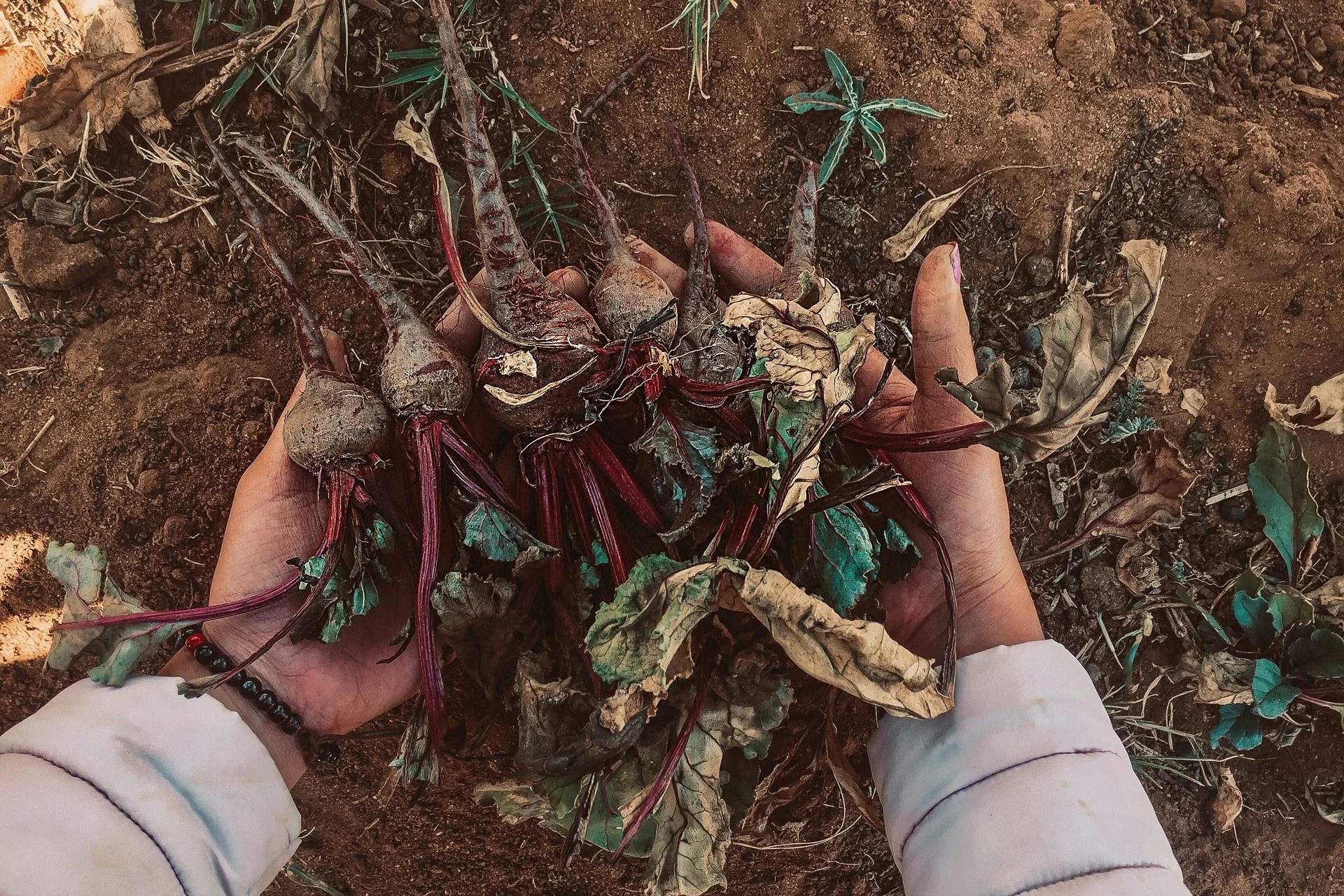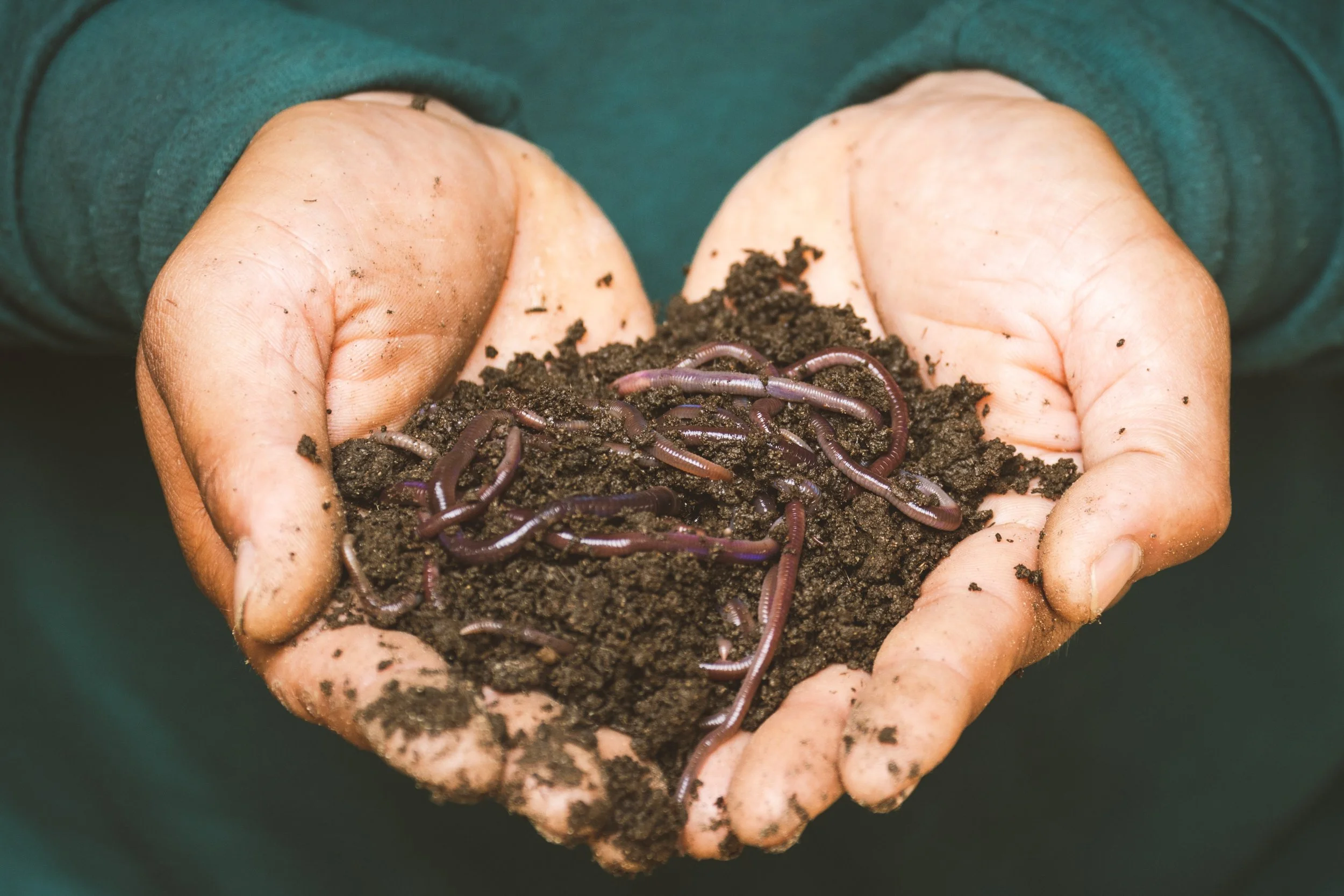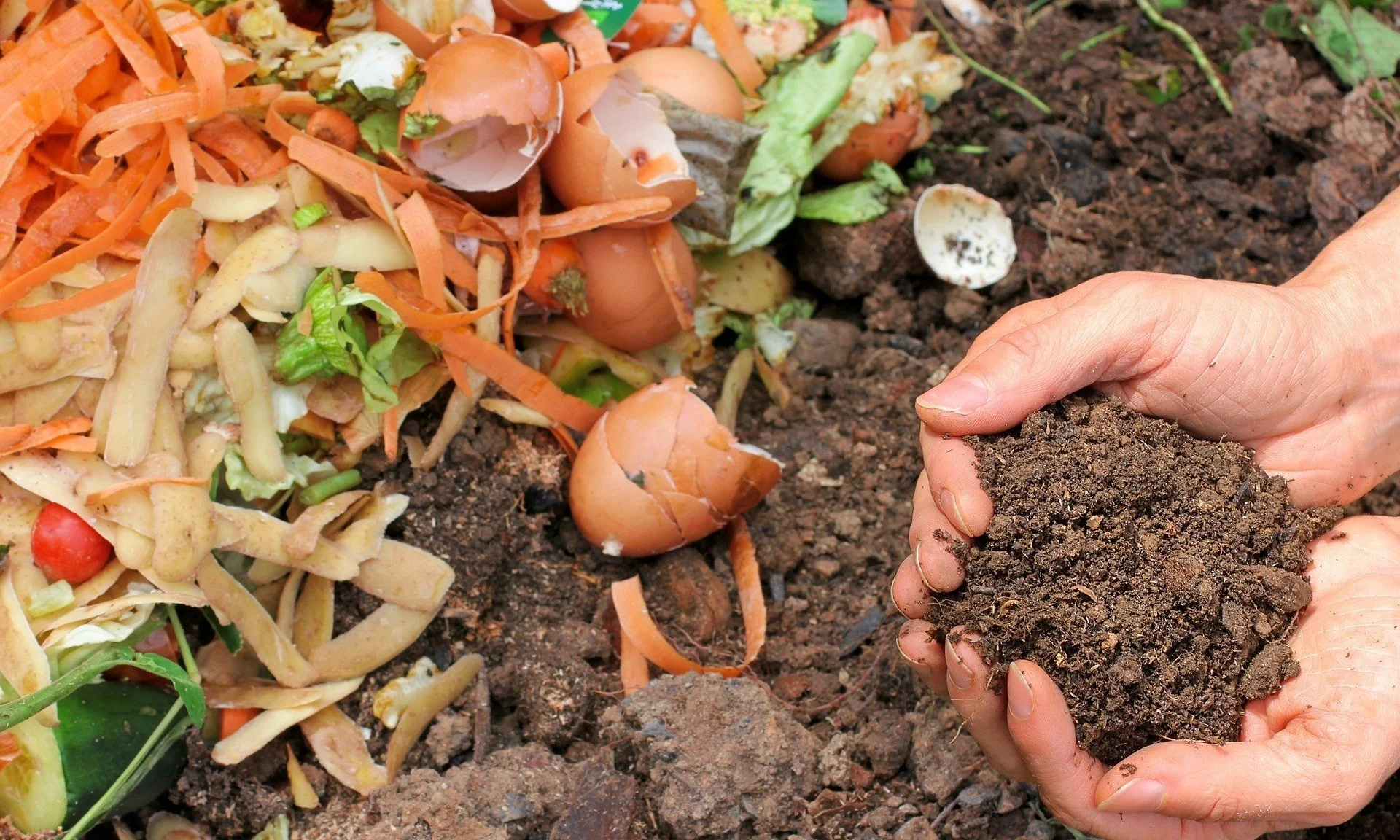A Guide to Composting at Home
This article is a collaborative piece by Francisca Amar and Samantha Rankin. Francisca is an environmental educator, conservationist and urban gardener. Samantha is a writer, environmental scientist grad and outdoor enthusiast.
As humans, we continuously take from the soil.
Fruits, vegetables and fungi grow and flourish thanks to the soil nutrients. Then we pick them, fuel our bodies, discard the scraps and do it all again. But what if there’s a missing link in this cycle?
Composting is our way of giving back to nature. By composting our organic waste, we’re returning nutrients to the soil, which then feeds the plants, insects, birds and animals. Not only that, but it also reduces waste, mitigates climate change and adds vital nutrients to your garden. Our trash is literally nature’s treasure.
And best of all? It’s simple and free.
In this guide to composting at home, we’ll explore...
What is composting
Benefits of composting
The two most common compost systems
What is compostable
What is Composting?
Composting is the process of recycling organic matter (like food scraps) to the soil, which has flow-on effects for people and the planet. Now we know what you’re thinking – but what is organic matter? Put simply, it’s “anything that has once lived and no longer does”.
Imagine a tree falls in the forest along your regular walking track. You walk past the tree over a series of weeks, months and years, and notice it slowly decomposes (thanks to bacteria, fungi and invertebrates like worms). This is an example of organic matter returning to the soil.
Composting is the same thing, only you’re imitating this natural occurrence in your own garden. And instead of old trees, it’ll be food scraps from that delicious meal you made for your family.
Benefits of Composting
Mitigates climate change
When food scraps go to landfill, it releases greenhouse gas emissions like methane into the environment. Methane is an odourless gas that’s far more potent than carbon dioxide, having a powerful warming effect. By composting our food, we’re reducing methane in the atmosphere – all while nourishing our soil and garden. Win, win.
Reduces waste
Did you know that one third of the world’s food is wasted? This equates to around 1.3 billion tonnes of food per year, which then winds up in landfill and waterways (1). Composting is nature’s way of turning this trash into treasure. It’s a small-scale change with a big impact.
It’s fun
Watching nature transform unusable food scraps into something positive is incredibly rewarding. As children, we often loved playing outside. I think composting connects us back to this natural world around us (that we often forget we’re a part of).
Nourishes soil
Just like donating your clothes to a local charity, composting gives once-loved materials a second life. Composting improves soil quality, which in turn makes your garden thrive. These nutrients are used to grow yummy vegetables for eating, or beautiful flowers to attract birds and bees.
The Two Most Common Systems to Compost at Home
So, you want to give composting a go. Good on you. But before you begin, you need to determine which composting system is right for your space.
A composting bin
This can be a large plastic or wooden bin with an opening at the bottom so your organic matter has direct contact with the soil. They usually have vents on the side to allow for airflow.
Compost bins are incredibly easy to maintain and can decompose larger quantities of waste. For this reason, they’re often suited to houses with two or more people and adequate garden space.
A worm farm
Worm farms are incredibly versatile – they can be used in any home, regardless of your space (even apartments). The system often has “legs” so there is no need to be in contact with soil (making it ideal for paved areas). They also consist of multiple drawers and a tap that releases liquid fertiliser. Worm farms are also incredibly simple, but they do require slightly more work than a compost bin, as you have to create the ideal habitat for your worm friends.
A note on worms
Despite what the name suggests, worms can be used in both compost bins and worm farms. They’re incredible creatures – and the more you observe them, the more you’ll fall in love. They help to increase the amount of oxygen in your system by digging tunnels and eating through the scraps. This helps your organic matter to decompose faster.
So, what is compostable?
If you want to have a thriving compost, it’s time to consider what you’re adding to it.
All composts need a balance of nitrogen, carbon, oxygen, water and decomposers. More specifically, it should contain a good balance of nitrogen and carbon (in a 2:3 carbon to nitrogen ratio).
Okay, but before you get put off by this jargon, let’s break it down.
Nitrogen is mostly found in greens and brighter coloured foods, like spinach, vegetable skins and fruit discards. Carbon is typically found in browns and greys, like leaves, ash and cardboard.
Layering nitrogen and carbon makes for a healthy compost – and it’s a good idea to layer carbon matter on the top as this helps to remove smells and detract pests.
Finally, when you’re deciding what you can and can’t compost, always ask yourself “was this once a living thing – or a part of a living thing?” If the answer is yes, you can compost it.
Examples of what you can compost:
Ash, cardboard, coffee grounds, cotton, cut flowers, dust, eggshells, hair, lawn, clippings, leaves, paper, tea bags, vacuum dust, wool
Examples of what you can’t compost:
Glass, metals, plastic
The Final Word
Composting is an incredibly simple, rewarding and fun way to give back to your garden and the planet. Regardless of whether you live at a farm, house or small apartment, anybody can compost as long as you find the right system for your space.
At Give Back Chile, we run a series of Short Environmental Courses where you can learn practical skills, boost your knowledge and make connections with like-minded people. Our Composting at Home course is a fantastic way to get started on your composting journey.
The course runs for 1.5 hours via Zoom and welcomes all experience levels.
If you’re interested in booking, please visit the course page or get in touch with Francisca at francisca@givebackchile.com
More resources:
1. https://www.environment.gov.au/protection/waste/food-waste
2. Calverley J & Ceres 2017, ´The Urban Farmer´, published by Harper Collins Publishers Australia Pty Limited
3. L & O Carter 2019, ´A Family Guide to Waste-Free Living´, published by Pan Macmillan Australia Pty Ltd, Sydney, Australia
4. E Rhoads 2018, ¨Waste Not´, published by Hardie Grant Books, an imprint of Hardie Grant Publishing, Victoria, Australia







